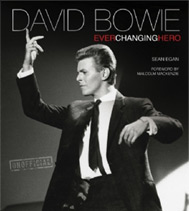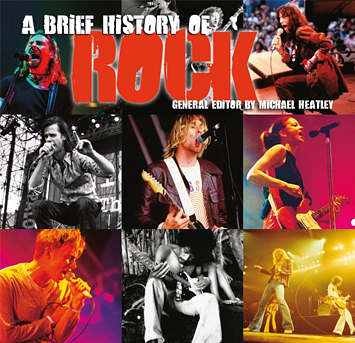Contemporary music whose ancestry lies in the Western classical tradition finds itself in a curious position. Nothing illustrates this better than the fact that we are not entirely sure what to call it. The label ‘classical’ seems anachronistic, especially when applied to composers who have challenged some of the fundamental assumptions of the classical tradition. ‘Concert music’ is similarly problematic, as many of the more radical expressions have overspilled the ...
Though art music since the war tended more often to define itself in opposition to rock and commercial pop music, signs of mutual regard were already emerging in the 1960s. While it is Stockhausen’s face that stands out from the crowd on the front cover of the Beatles’ 1967 album Sergeant Pepper’s Lonely Hearts Club Band, it was Berio who returned the compliment that same year on behalf of the ...
Camille Saint-Saëns (1835–1921) is said to have written the first film score with L’assassinat du duc de Guise (‘The Assassination of the Duke of Guise’, c. 1908). Many composers in the US and Europe followed suit, although few wished to make a career in films. A famous exception was Erich Wolfgang Korngold (1897–1957), whose scores include the Academy Award-winning The Adventures of Robin Hood (1938). Other American composers to write ...
The history of opera is dominated by Italian and Austro-German composers. It is in Italy and Germany that we find the greatest number of opera houses. La Scala in Milan lays claim to be the most famous opera house in the world, and its opening night every season is a major event in the country’s social calendar. The theatre, opened in 1778, has been the venue for the premieres of ...
The most successful librettist of the modern era was W. H. Auden, who provided texts for Britten’s first opera, Paul Bunyan and, in collaboration with Chester Kallman, for operas by Stravinsky (The Rake’s Progress), Henze (Elegy for Young Lovers, 1961; The Bassarids, 1966), and for less acclaimed works by John Gardner (1917–2011) and Nicolas Nabokov (1903–78). Few opera librettists in recent history have been as prolific. Many composers have preferred to ...
The ground-breaking literature of the twentieth century had a major impact on composers, particularly in the 1950s and 60s. The work of Berio has consistently drawn upon the works of James Joyce for parallels between verbal and musical technique, particularly ‘stream of consciousness’ chapters such as Molly Bloom’s soliloquy from Ulysses, while Barraqué based his entire later output on Hermann Broch’s poetic novel, The Death of Virgil. The poets e.e. ...
Messiaen’s creative personality and influence as a teacher were fundamental to the development of new music in Europe after 1945. He was Debussy’s natural successor, taking the French master’s innovative approach to harmony and rhythm to a new plane, while sharing his openness to the music of other cultures. Although by the late 1940s the main elements of Messiaen’s harmonic language were already in place, he continued to develop as ...
From the late 1940s onwards, John Cage was a figure of major significance as a thinker, inventor and exemplar whose approach drew crucial sustenance from outside the Western tradition. A different conception of time and sound informed Cage’s music from the start, including his influential makeover of the conventional piano, which he ‘prepared’ by inserting bolts, pieces of rubber and other objects between its strings. The result, as heard in ...
Inspired by Cage’s pioneering mixed-media events of the 1950s, Fluxus was an informal group of composers, artists and perfomers founded by the Lithuanian-born artist and architect George Maciunas (1931–78). After its first concert in Wiesbaden (1962), it remained active in Europe and the US intermittently until Maciunas’s death. The group also included the composers La Monte Young (b. 1935), Tenney and Nam June Paik (1932–2006), and the artist and performer ...
La Monte Young was saxophonist and jazz musician as a youth, but his postgraduate work at the University of California at Berkeley (where he met Riley) led to a performance of his Trio for Strings (1958) arranged by his composition teacher, Seymour Shifrin (1926–79), in an attempt to show Young how much he had miscalculated. The work, consisting entirely of long notes and rests, is now regarded as the source ...
The synthesizer has become hugely influential since the 1960s, but it had many antecedents in twentieth-century electronic instruments. The theremin, invented in 1920 by the Russian Lev Theremin, consists of a box containing thermionic valves producing ethereal oscillations which were modified by moving a hand around an attached antenna. The ondes martenot was first demonstrated in 1928 by the French inventor Maurice Martenot. It produced oscillating frequencies in a similar way ...
Ideological divisions and oppressive regimes had a significant impact on the first four decades of post-war music, particularly in Eastern Europe. The 15 symphonies of Shostakovich are now widely seen as political statements, sometimes overt, sometimes covert, as with the Tenth Symphony (1953) and its haunting depiction of Russia under Stalinism. Dissent also found expression in the music of Schnittke, whose use of serial techniques was sufficient to ensure his ...
After a conventional CD recording session comes the post-production session, in which the recorded sounds are analysed, mixed and edited. The mixing involves making precise adjustments to the relative loudness and tone quality of individual instruments and different parts of the music. This is achieved using a mixing desk – a large sloping console, often with dozens of sets of controls. Editing is an aspect of post-production in classical music recording ...
By the 1950s, Modernism in its new manifestations was well established, with strongholds in the Darmstadt courses and at the Donaueschingen Festival, as well as in Paris and Cologne. Its strength was increasingly felt in the US as well as Europe, with Babbitt, Wolpe and Carter all evolving individual lines of development. The most striking instance of its impact, however, was on Stravinsky, widely regarded as the greatest composer living. ...
From the 1980s, the new sound-worlds discovered by Stockhausen and others, using tape recorders and recording studio equipment, began to be further extended by the use of computers. The computer enables composers to examine and modify their work in unprecedented detail. Whereas the synthesizer can control pitch and timbre with ease, the computer can go a stage further and control musical time. IRCAM in Paris is an important centre for ...
AUTHORITATIVE
An extensive music information resource, bringing together the talents and expertise of a wide range of editors and musicologists, including Stanley Sadie, Charles Wilson, Paul Du Noyer, Tony Byworth, Bob Allen, Howard Mandel, Cliff Douse, William Schafer, John Wilson...
CURATED
Classical, Rock, Blues, Jazz, Country and more. Flame Tree has been making encyclopaedias and guides about music for over 20 years. Now Flame Tree Pro brings together a huge canon of carefully curated information on genres, styles, artists and instruments. It's a perfect tool for study, and entertaining too, a great companion to our music books.

David Bowie
Fantastic new, unofficial biography covers
his life, music, art and movies, with a
sweep of incredible photographs.


